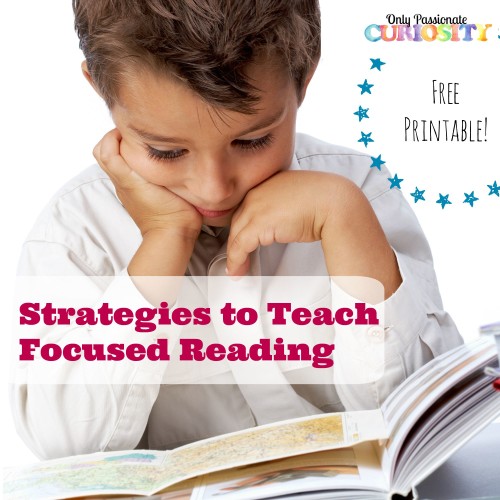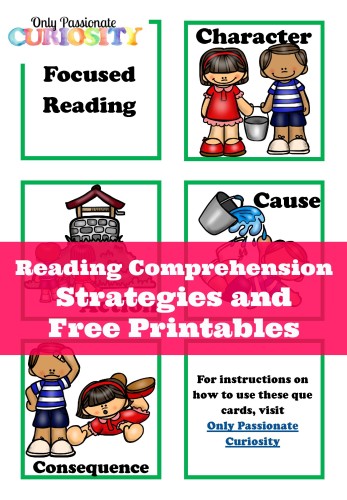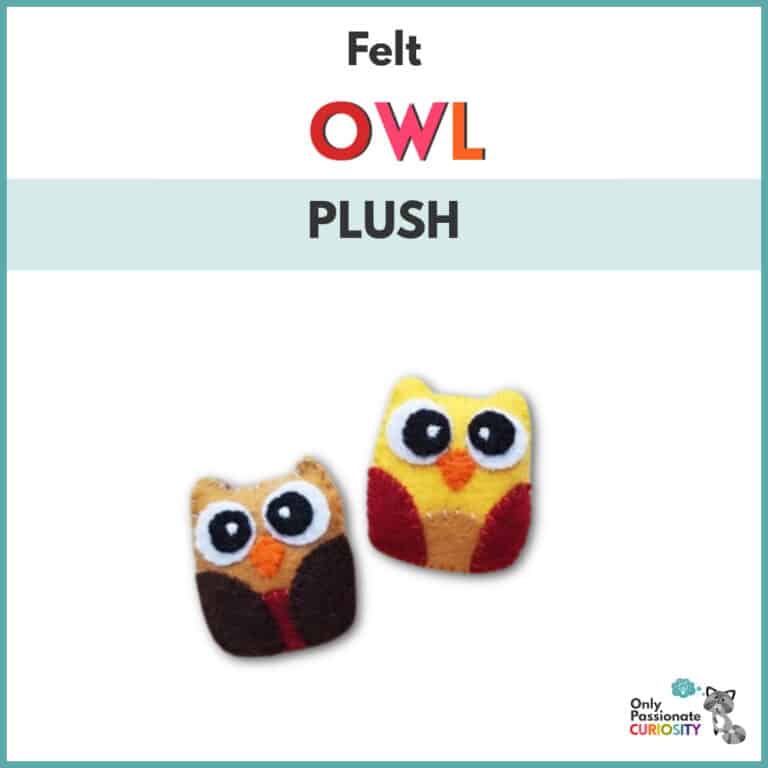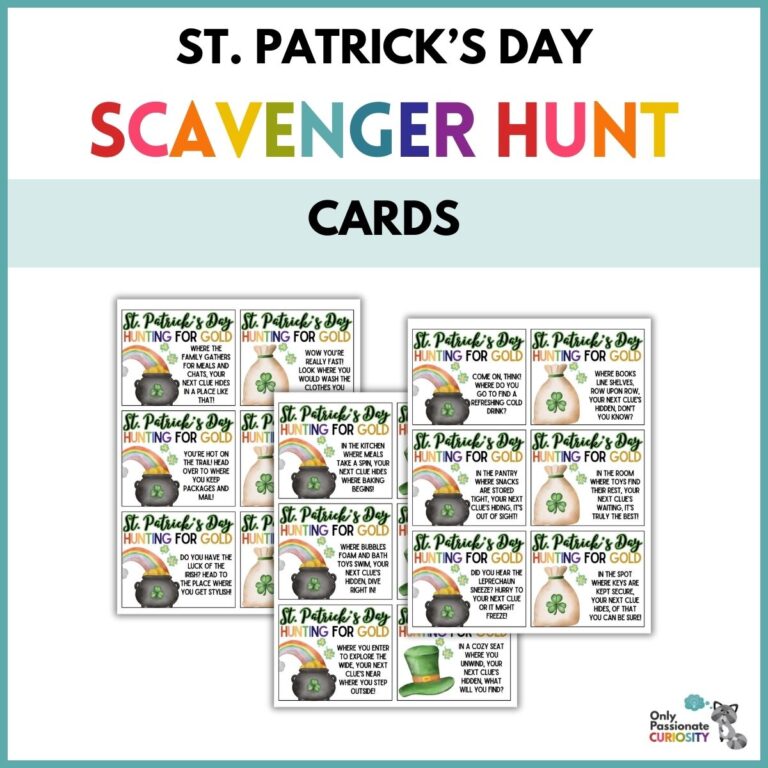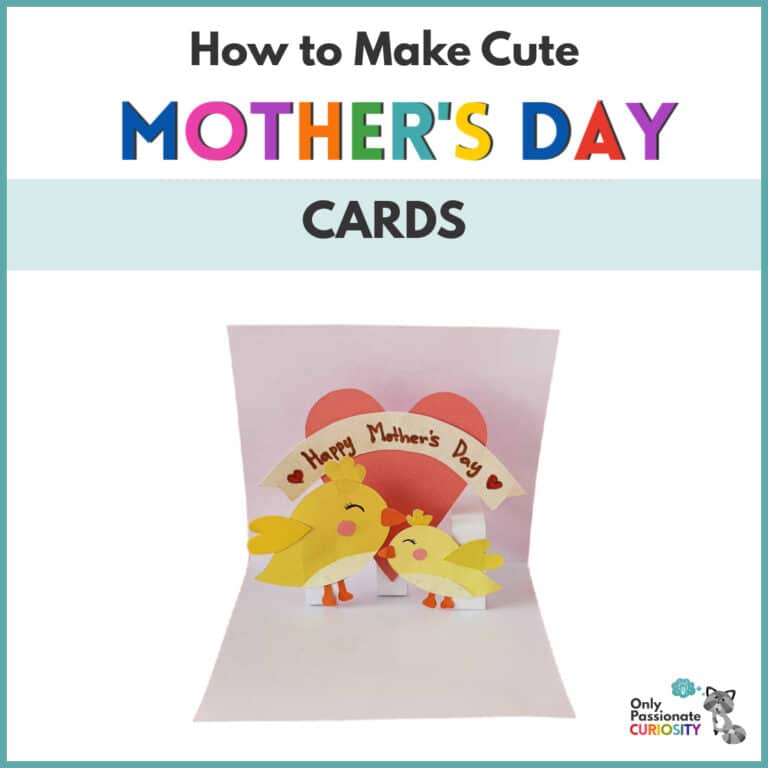Teaching Reading Comprehension {Free Printable}
Many children, and parents, struggle with reading comprehension at all ages and across all subjects. However, there are ways to help your child over the hump. This guide will help you to move your child through Bloom’s Taxonomy of Learning, from Remembering to Analyzing, using easy to find or make tools. It will require time and patience as well, since students who struggle with reading will need lots of time and attention.
Method 1: Sticky Notes
This is the first part in reading comprehension: identification. Students at all reading levels need to be able to pick out the following: characters, setting, problems/solutions (plot), and important details. Students at a higher level need to be able to identify major themes and allegories in their reading.
- Choose several colors of page marker sized sticky notes and designate their meaning. For example: blue=main character, red=important setting, green=major problem, orange=something important/interesting.
- At first, help your child to select when to use the stickies. One way would be to read the first several chapters together and think out loud:
- “Hmmmmm, this book seems to be told from Henry’s point of view. I know this because it said, ‘Henry thought that Mom was mean to ground him for the week.’ Do you think that Henry might be the main character?”
- “After reading for a while, I noticed that most of the events in the story take place at school. What do you think the important setting in this book is?”
- With kids, it is all about modeling and helping to make those connections in their brains.
Keep using this system until your child can pick out the main character without using sticky notes and without your direct help. This may take some time, and a lot of patience.
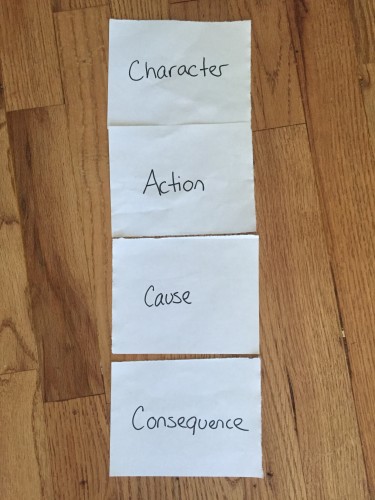
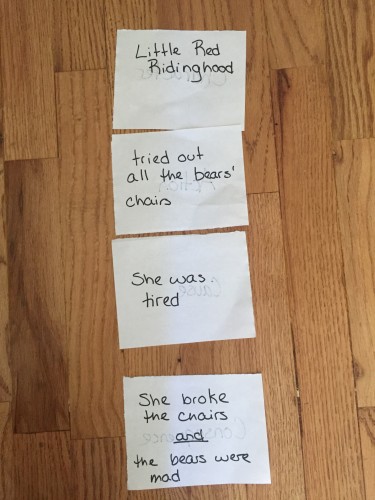
Or, use the free printable cue-cards linked below!
Method 2: Guided Retelling (Written or Out-loud)
Now that your student is able to pick out the major points in a book or story, it is time to see if they remember and understand. You is aimed at younger kids, but can be leveled up for older kiddos, too.
- Create a fill-in-the-blank chart or worksheet or write it on a whiteboard. The chart should contain the major points of the story: who (characters), what (problem/solution), when/where (setting). Little kids could just tell you/write each part in a single word or phrase. Older kids should be using complete sentences. Even older kids should be doing more in-depth explanations in paragraph format.
- Highlight each section that you are asking the child to remember in the corresponding sticky color. In my example, highlight the main character fill-in using blue.
- Go through the book with your child at first. Help her to find the right sticky to match each fill-in question.
- Use the gradual release system to slowly give your child more responsibilities for this. By the end, you should be able to simply ask him or hand her the prompt form. She should be able to answer aurally or in writing without your assistance.
Method 3: Understand and Analyze
This is where a lot of kids get tripped up. They can remember and retell the story perfectly, but don’t understand the why. They can’t explain why the main character acted in a certain way, or how it moved the story forward. You can use homemade story cards to help!
- Create playing cards, for younger kids make about a dozen. For older kids, you may need more. Divide them into four roughly equal groups. On group 1, write: Character. Group 2: Action. Group 3: Cause. Group 4: Consequence.
- Get the cards laminated for reuse.
- Using your child’s retelling of the story, create a story map. This will take more than one card from each category.For each major event:
- think about the character(s) involved.
- decide what caused each character to act they way they did during the event.
- what happened as a result of the event?
- The answers to all of these can be written onto the laminated cards and displayed.
- Take away one of the characters, or one of the cause cards.
- Ask: Would this event still have happened if (x) was removed? Why or why not?
- Ask: What happened next in the story? Did we see all of the consequences of this action right away? Did some of them happen later?
- Ask: How does the action of this character impact this character or event?
- Ask: How does it move the story forward?
- For older students, help them to create essays based on this. For middle and high school students, they should be able to identify the major themes and explain how the actions of the characters relate to those themes. Younger students need to be able to identify cause and effect in stories.
- You can apply this to History and Social Studies, too! Simply put the major historical figures onto the character cards. Think about how the US might be different in King George had agreed to our initial demands. Think about how the world might be different if Columbus had never sailed to the Caribbean.
- You could also play matching games with these cards, or sort them according to importance.
Other ideas for demonstrating understanding, analyzing, and remembering:
- Create an alternate ending to the story
- Draw a comic strip showing major plot points
- Write a journal entry from the main character’s point of view. Or use a secondary character to switch it up!
- Create a model of one of the main settings, label important places/people
- Draw a diagram showing how the story flows, how characters intersect, and how events lead to each other
- Create a play, skit, or song/rap about the story, explaining the characters, setting, and plot. Include WHY important things in the plot happen.
These are not designed to be easy fixes. Reading comprehension struggles are not going to be solved overnight. However, with patience and a little creativity, you can help guide your student to become a better and more insightful reader.
Free Printable Comprehension Cue Cards
We have put together some easy to use printable cue cards to help you with these activities.
Grab them for free now from our shop!




